|
|
|
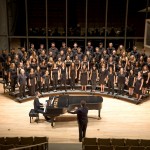
|
|
|
The Swarthmore College Program in Peace and Conflict Studies extends a big congratulations to PCS student Taylor Morgan ’19:
Taylor found out this week that she is a recipient of the prestigious Truman Scholarship.
Thank you to the Swarthmore College Office of Communications for covering Taylor’s story and major accomplishment!
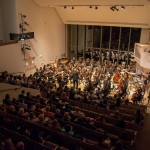
Each semester, the Swarthmore College Orchestra performs a culminating concert of various musical works in Lang Concert Hall. This semester, the orchestra is playing two pieces: the first movement of Beethoven’s Piano Concerto No. 5, also called the “Emperor Concerto,” and Rachmaninoff’s Symphonic Dances. Professor Andrew Hauze of the Music and Dance Department directs the orchestra and has put careful time and thought into choosing the pieces the orchestra plays each semester, deliberating what will be challenging and simultaneously rewarding to play.
This year, Josh Mundinger ‘18 won the Concerto Competition; a contest held each spring, the winner of this competition performs in the Orchestra’s spring concert. Mundinger chose to prepare Beethoven’s “Emperor Concerto,” which is why the orchestra is playing this particular piece in the concert. Rachmaninoff’s Symphonic Dances was deliberately selected as a rich learning experience for the orchestra students, as the musical work is interestingly complex and notoriously challenging.
Professor Hauze spoke on his decision to have the orchestra play the Rachmaninoff piece: “with the personnel that we have, all the students want a challenge and I want to give them a challenge. This piece is one which is very difficult but I think it’s the kind of piece where everyone has at some point a very important part and it’s all very musically satisfying, there’s no filler in this piece. Everything everyone plays, there’s a reason for why it’s there, and the way that it interacts with the other parts of the orchestra I find interesting and complex. The learning experience of the piece is very rich, my own study as well as learning with the orchestra.”
Rachmaninoff wrote the work to premiere in 1941 for the Philadelphia Orchestra, with which he had worked a number of times and was close friends with the conductor, Eugene Ormandy, as well as the orchestra players. According to Professor Hauze, this may contribute to the reason why the work allocates importance to every instrument in the orchestra.
Although Symphonic Dances is considered a difficult work to play, Professor Hauze was confident in the capabilities of this group of musicians to tackle such a stylistic challenge. According to Hauze, though the work has become a more common repertory piece for orchestras, it is very rare for college students to have already played Symphonic Dances in their high school orchestras, and he was hopeful that it would be new and exciting for everyone involved.
“[The orchestra is] game for a challenge and really strive with a lot of enthusiasm and energy to improve every week. I think they bring a freshness to it. In a way, this piece combines a sharply etched and sometimes satirical style with late nineteenth century, sweeping textures. It’s a tricky style to figure out. The group brings this sense, and they don’t have any preconceived notions, we’re going at it and learning it together.”
The Orchestra concert will be held on Friday, May 4 at 8pm in Lang Concert Hall. This performance will be free and open to the public.
Marion Kudla ’19
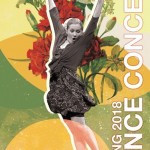
With summer break and finals growing steadily closer, everyone deserves a break from end-of-semester stress. Students, faculty and community members alike should come to the Dance Concert (May 4, 8:30 pm and May 5, 8 pm in the LPAC Pearson-Hall Theater) and see what stunning pieces various dance classes have been working on. The Concert features performances by students in Dance Lab, Ensemble and Repertoire classes, and individual performances, in addition to a performance by guest choreographer Kun-Yang Lin’s dance company, Kun-Yang Lin/Dancers.
Kim Arrow, Associate Professor of Dance, is managing the Concert. His work BREAKS, performed by members of his Taiko Repertory class, will open the concert.
“In [BREAKS] I combine contemporary and traditional repertory in a mix of styles in one piece, which I admit is a bit of a cheeky thing to do. But I love the transitions and juxtapositions and contrasts: ergo the title,” says Arrow.
The Concert will include Ballet, Contemporary, Tap, and African-based dance performances. For Professor Arrow, “the most enjoyable part [of the concert] …is watching individual works come together, especially for those which I’ve been able to follow from their inception, such as Molly Murphy’s and Jenny Gao’s.”
Molly Murphy ‘18 will be performing a tap piece, “Neighbors,” which she choreographed herself. She will be accompanied by Wesley Han ‘18 and Francesca Rothell ‘21. Additionally, she is a TA for the tap repertoire class and part of the Taiko Repertory. As Murphy puts it, “it’s going to be fun! And also a marathon, because I’ll be in three numbers with no time to change in between, but it will be fun. This is my last chance to make something at Swarthmore before I graduate…I’ve been in dance concerts every semester as part of a class, and this will be the third time I perform one of my own compositions.”
“Neighbors” is a lighthearted piece about loud, annoying neighbors — perfect for tap dancing, which Murphy has been practicing since she was seven. She was inspired to choreograph the piece by a Philadelphia swing club which frequently plays old jazz songs.
Jenny Gao ’18, a student of Dance Lab II (taught by Kim Arrow) has also choreographed her own piece, a solo entitled “virga” (a natural phenomenon in which massive streaks of rain never reach the ground due to the dryness of air). She was inspired by a Dance Lab assignment which required students to choose an animal to represent; she chose a bear.
“I wouldn’t even call it a bear now, though,” explains Gao. “More like a being or creature that evolves as the piece goes on…as a senior it was very important for me to create something very intimately.”
Gao started in dance at Swarthmore later than most of the department’s students, taking her first class in her sophomore year and her first ballet class this semester.
“I think that’s why I sometimes struggle to put it in choreographic terms, which is both good and bad…A lot of the movements [in the piece] are things you wouldn’t normally do. I was inspired by my training in martial arts, in Beijing opera, and by my performance as Ariel [in this year’s Yellow Stockings’ production of The Tempest].]”
Although both students choreographed their pieces themselves, they worked closely with Professor Arrow, who offered feedback and support. As he says himself, “I am always very proud of the people involved in producing such a thing as a concert with all its challenges and hard work required, not to mention the talent and experience required of the performers and choreographers. And I’m always amazed at the variety of dance and music styles and traditions and the polyglot movement vocabulary required to pull it off.”
Emilie Hautemont ’20
WEDNESDAY, MAY 2, 2018, 7 – 9PM
SCHEUER ROOM
Download a flyer here: Madam Tayoush Poster
Performance Artist Elias Wakeem, also known as Madam Tayoush, is a queer Arab Palestinian artist living and working in Palestine. Through performance they/she examines the reaction of the audience to their/her personal story of the place they/she grew up in with its geographical, historical and political situations. Madam Tayoush has created a series of monthly radical queer drag ball parties in Jerusalem called “Jerusalem is Burning”.
Sponsored by Peace & Conflict Studies, Gender & Sexuality Studies, Sociology & Anthropology, the Lang Center, and the Sager Fund.
Open to the public.
Peace and Conflict Studies is proud to cosponsor:
Wednesday, April 25, 2018, 4:30-6 p.m.
McCabe Library Atrium
Refreshments provided
Free copies of Maidenhair will be available for students!
After working as an interpreter for Russian-speaking refugees seeking asylum at the Swiss border, emigre-dissident Mikhail Shishkin incorporated this experience into his novel Maidenhair. The stories he presents offer a more human(e) perspective that encourages empathy, that transcends statistics by delving deep into the stories of the displaced, and that emphasizes the power of storytelling as a means of preservation. Join us for a reading and discussion with one of Russia’s best living writers as we consider how art can help us understand the global refugee crisis. In addition to his reading, Shishkin, who is the only writer to have won all three of Russia’s top literary prizes, will speak about his work in Switzerland and take questions from the audience for a wide-ranging discussion.
 For more information, please contact José Vergara (jvergar1@swarthmore.edu).
For more information, please contact José Vergara (jvergar1@swarthmore.edu).
Co-sponsored by the President’s Office Andrew W. Mellon Grant, the Global Affairs Program at the Lang Center for Civic & Social Responsibility, the Intercultural Center, Swarthmore Libraries, Russian Studies, German Studies, Peace & Conflict Studies, the History Department, and the Bryn Mawr Russian Department.
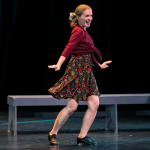
There is no question that senior Molly Murphy finds happiness through dance. Any of her performances at the Swarthmore student dance concerts these past four years has showcased not only her finesse and technicality in tap dancing, but also her ability to brighten the stage with an infectious smile and an energy that radiates throughout the theater. Off the stage, Molly is a little more reserved and soft spoken, though her gentle and soothing demeanor is still as infectious as her stage presence. During my conversation with her, I found myself drawn in, listening to her words with an attentiveness that follows when someone has hushed and important things to share.
“I’m a very quiet person; tap is when I let out a lot of noise. It’s my happy place. People tell me I’m very different when I tap dance or when I’m performing tap than in every other circumstance. Tap is another way for me to express myself and communicate in ways that I often can’t do when I’m talking to people.” Tap has been a mode of expression for Molly and has provided a source of support while at Swarthmore. Despite her shyness in outside contexts, Molly has discovered a form of communication that has allowed her to connect with students and professors in and out of the studio, allowing her to lay hold of dance as an identity within her community.
“Coming to Swarthmore and meeting Sharon Friedler, talking with her and taking classes with her, I realized how big a part dance was in my life. Before Swarthmore, I never really thought of it in relationship with my identity. I took Arts as Social Change and Dancing Identities and did my first independent project [all with Professor Friedler]. I realized it was something I couldn’t put to the side. Dance is something that’s gotten me through Swarthmore and being a dance minor ensured that dance wouldn’t get pushed aside in the face of other commitments.”
These academic dance courses, particularly Arts as Social Change and Dancing Identities, opened Molly’s eyes to the possibility of dance to influence people’s lives and create change in communities. As a Peace and Conflict Studies major, Molly has naturally been interested in the ways that dance can offer meaning and impact.
“I’m a Peace and Conflict Studies major; taking Arts as Social Change made me more aware of dance as a positive form of social change, whether that is in youth programs, prison settings, or Sharon’s dance programs for people with Parkinson’s Disease. It’s kind of a therapeutic tool for a variety of different communities and a way to pass on tradition and stories.”
Molly hopes to continue participating in dance communities even after she graduates from Swarthmore this spring. Recently, she has been taking swing dance and tango classes in Philadelphia, and finds that having common ground, a passion for dance, makes connecting with people a little bit easier. Even despite the exciting possibility of meeting new people in dancecommunities, Molly is still nostalgic about her time at Swarthmore and nods agreeably when I ask her if there are things she will miss about the Musicand Dance Department here.
“Oh yeah. All of the LPAC crew and teachers and professors in the dancedepartment, they really made Swarthmore home for me. I’m going to miss that because coming into Swarthmore, it was a much more supportive danceenvironment than what I’d experienced in high school, which was much more competitive. It’s been nice to TA for the tap repertory class here and be able to do a few of my own pieces and work one on one with professors on how to develop ideas. [It made me see that] dance is an art form in its own right and [taught me] how to use and change space and locate yourself within that space. So I have Swarthmore to thank for helping me to understand what my relationship is with dance and how it has shaped my identity.”
Molly will be performing for the last time in the Swarthmore student danceconcert this spring with the tap repertory class, as well as a smaller piece she choreographed herself. She is approaching this piece in a similar way to the tap piece she choreographed last spring, which involved three of her friends who were graduating. Considered her fondest dance memory at Swarthmore, the piece was titled “Until Tomorrow” and was about friendship and the idea that people may not always be in the same space, but that experiences do last even if you’re not always together.
This time, that message will be for Molly and the other seniors in the tap piece, a reminder of the friendships formed over the past four years and the endless possibilities in the coming years.
Marion Kudla ’19
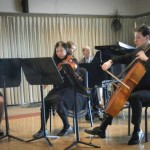
What do the musical Into The Woods, an experimental student orchestra, and a cello/piano sonata have in common? These are just a few performances featured in the Fetter concert series, which will run from April 20 through April 28.
Professor Michael Johns has been coordinating the Fetter Program since 2001. The program, originally called “Pollard Scholarship Funds,” debuted in 1975. As Professor Johns explains,
“In 2001, the program, which had initially supported a single string quartet, was renamed the Elizabeth Pollard Fetter Chamber Music Program and expanded to support the coaching of multiple chamber music groups. Funding continues to be enhanced by successive generations of the Fetter family. Students wanting to participate in the Fetter Program need to audition, and the time commitment is two hours a week: one hour with an assigned professional coach, a second hour-long rehearsal by the students.”
The Fetter Program has earned recognition beyond Swarthmore. Ellen Liu ’18, who will be performing in the first concert of the Fetter series, is taking part in the program for the first time this semester, after a four-year break from music classes.
“I heard about the program prior to coming to Swarthmore, because I had planned on getting involved in the music department from the beginning,” says Liu. “…last semester, one of my friends, who has played in a chamber group for all his time here, encouraged me to reach out to the department and see how I could get back into it. I was put into this group and I honestly couldn’t be more excited to be able to play again…I hadn’t played piano seriously in a long time and I was really happy to be able to return to musicsince it was such a big part of my life before college.” Liu will be performing a Beethoven trio for flute, bassoon, and piano – a rarely-seen combination.
This year’s Fetter concerts feature a variety of musical pieces and instrumental combinations. Rebecca Rosenthal ’20, another first-time participant in the Fetter series, will be singing and playing the role of the Baker’s Wife in the opening from Stephen Sondheim’s acclaimed musicalInto The Woods.
“I got involved when [a friend] asked if I would be interested in learning the piece…It’s been a lot of fun — besides learning the difficult music, which has a ton of moving parts and a lot of tricky spots, we spent last weekend actually staging the 15-minute sequence. So I had to learn how to act, too! Channelling your emotions is an integral part of so many musicalperformances and is often overlooked.”
Not all Fetter students are first-time participants: this is Kevin Lai ’18’s fifth semester participating in the program; four previous Fetter concerts have not dampened his enthusiasm or energy. He will be performing the Grieg Sonata on the piano, accompanied by Kyle Yee ‘19 on the cello.
“I think last semester’s Fetter concert was by far my best. I really enjoyed the music, and the crowd was entertained by our playing,” says Lai. “For me, if we please the crowd and play as well as we do in rehearsals, then that makes me extremely happy. I have worked with the same coach for 4 semesters now, so at this point, we have developed an amazing working relationship. Our coach pushes us to not only nail all the notes but also bring out the emotions and feelings from the piece.”
Another Fetter performance to watch out for is the Lab Orchestra, a group launched in Fall 2016 to give student conductors some practical experience. Shira Samuels-Shragg ’20, one of this year’s conductors, explains that “musicians in the ensemble are paid to rehearse on Saturday mornings with two student conductors. Andrew Hauze brilliantly coaches us [the conductors], suggesting changes and pointing out problem areas. In that sense, Lab rehearsals function as conducting lessons. Since fall 2017, Andrew Kim ‘18 and I have been the two conductors of Lab, so each of us rehearses for an hour with the ensemble every week…this semester we’re conducting Bach’s Violin concerto in E Major with soloist David Kim, and that has been such a blessing. He is simultaneously a world-class violinist and an incredibly generous and kind collaborator.”
Each of the Fetter students expresses excitement for their upcoming concerts. Audience members can enjoy a variety of performances, from a Renaissance vocal quintet to jazz improvisations. As Samuels-Shragg sums it up,“the Fetter concerts are a wonderful break from end-of-semester craziness. It’s always exciting to see what other groups in the musicdepartment having been working on over the past several months.”
The Lab Orchestra and David Kim will be playing in the second Fetter concert, on Sunday April 22nd at 7:30 PM. The other Fetter concerts will be on April 20th, 27th, and 28th, at 8:00 PM in Lang Concert Hall.
Emilie Hautemont ’20
HOOP OF LIFE with Ty Defoe/ Gi izhig (Oneida/Ojibwe Nations)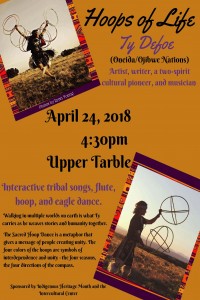
This event will include interactive tribal songs and flute, hoop, and eagle dances. This unique program explores stories within a framework of traditional and contemporary culture, history, and values. Ty draws on his vast repertoire gifted to him weaves urban anecdotes and teachings that can be applied to ideas of shape-shifting and how this relates to identity. Walking in multiple worlds on earth is what Ty carries as he weaves stories and humanity together. Storytelling is often discovered with a presenting a message. For example the Sacred Hoop Dance is a metaphor that gives a message of people creating unity. The four colors of the hoops are symbols of interdependence and unity – the four human races, the four seasons, the four directions of the compass. As the Hoops move they speak of renewed creation of all of the universe.
Upper Tarble
4:30-6PM
April 24, 2018
https://swatcentral.swarthmore.edu/?trumbaEmbed=view%3Devent%26eventid%3D288012818
 HOOP OF LIFE with Ty Defoe/ Gi izhig (Oneida/Ojibwe Nations)
HOOP OF LIFE with Ty Defoe/ Gi izhig (Oneida/Ojibwe Nations)
This event will include interactive tribal songs and flute, hoop, and eagle dances. This unique program explores stories within a framework of traditional and contemporary culture, history, and values. Ty draws on his vast repertoire gifted to him weaves urban anecdotes and teachings that can be applied to ideas of shape-shifting and how this relates to identity. Walking in multiple worlds on earth is what Ty carries as he weaves stories and humanity together. Storytelling is often discovered with a presenting a message. For example the Sacred Hoop Dance is a metaphor that gives a message of people creating unity. The four colors of the hoops are symbols of interdependence and unity – the four human races, the four seasons, the four directions of the compass. As the Hoops move they speak of renewed creation of all of the universe.
https://swatcentral.swarthmore.edu/?trumbaEmbed=view%3Devent%26eventid%3D288012818